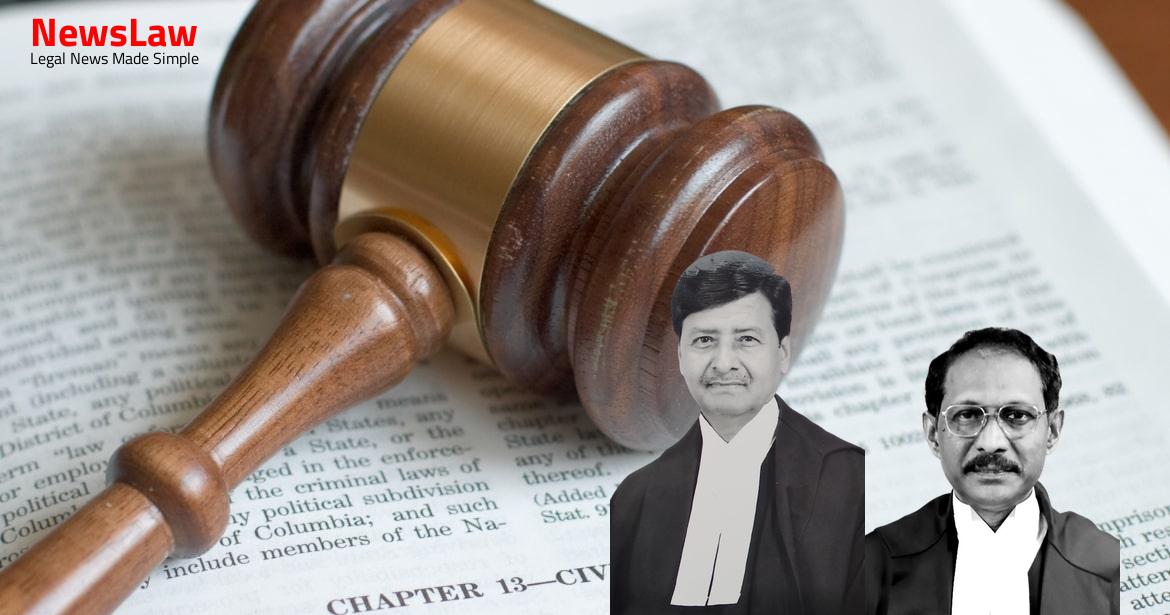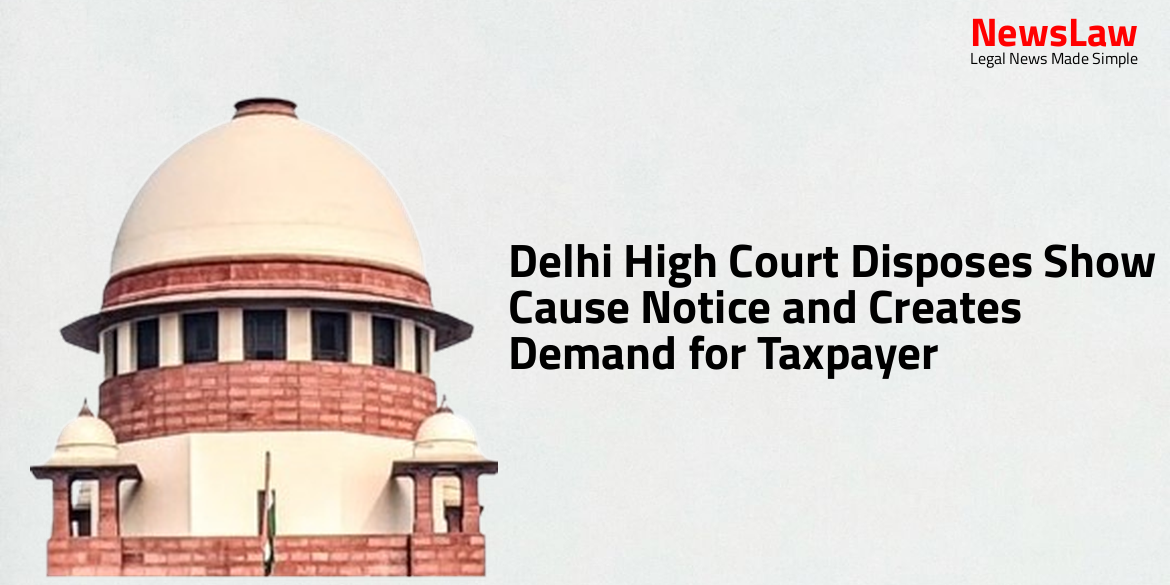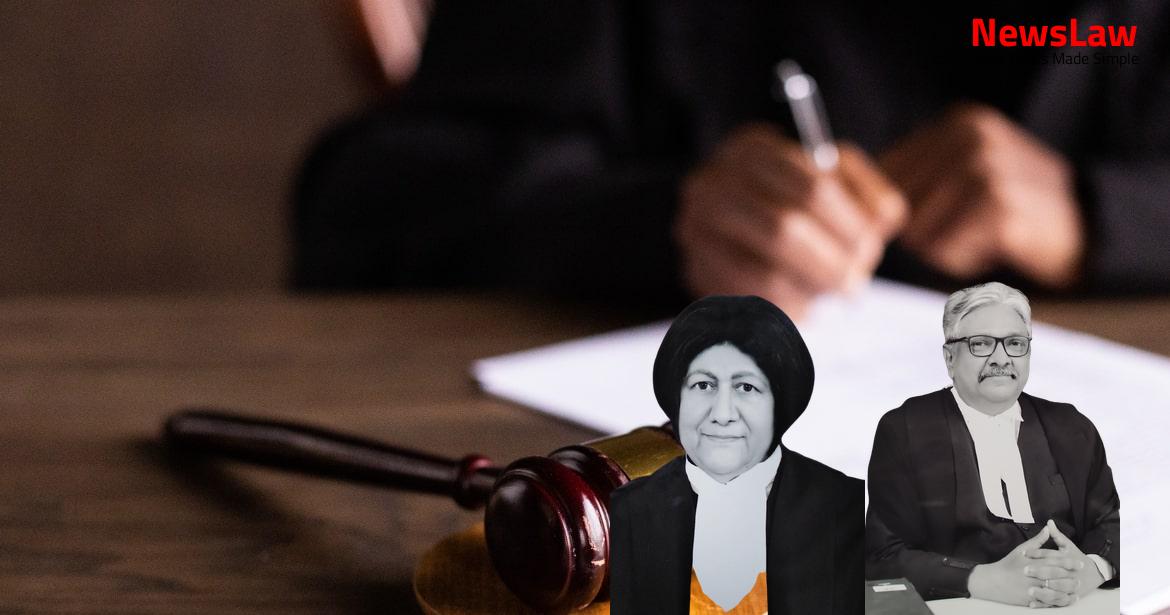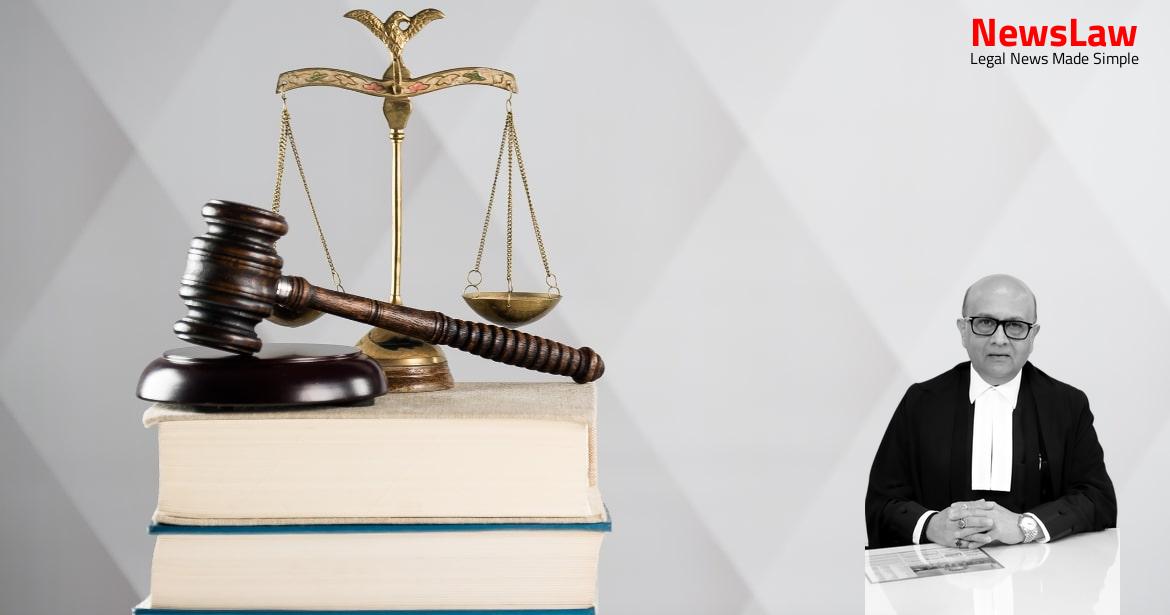Explore a comprehensive legal analysis focusing on the High Court’s approach to determining just compensation in personal injury cases. The court’s meticulous examination of various factors like permanent disability, future medical needs, and loss of amenities sheds light on the complexities of calculating fair compensation. Follow this insightful journey to understand how legal precedents shape compensation awards for individuals seeking redress for injuries sustained in accidents.
Facts
- The first and second respondents filed separate counter affidavits but did not dispute the certification of permanent disability by the Medical Board.
- The claimant appealed the dismissal of the claim petition and the High Court assessed her disabilities at 75% locomotive disability and 40% neuro-physical disability.
- The Medical Board concluded that the appellant’s disability was almost 100% due to serious injuries sustained in an accident almost two decades ago.
- The accident occurred when the appellant was only two years old and traveling in an autorickshaw with her parents.
- The Tribunal found the driver of the car responsible for the accident but dismissed the claim petition on technical grounds.
- The claimant, now facing lifelong physical and mental consequences, filed for compensation under the Motor Vehicles Act.
- The High Court determined the quantum of compensation based on the permanent disability incurred by the appellant.
- Various heads under which compensation was granted were taken into account, including permanent disability, loss of earning, pain and suffering, medical expenses, loss of amenities, transportation, extra nourishment, mental agony, future medical expenses, and attender charges.
- The High Court found fault with the Tribunal for dismissing the claim petition and directed the first respondent – Insurance Company to pay the quantified compensation of Rs. 13,34,000/- with interest at 7.5 percent per annum.
- The High Court declined to remand the matter to the Tribunal due to the significant time that had lapsed since the date of the accident.
- The claimant was referred to a Medical Board for examination and assessment of permanent disability, leading to the conclusion that the appellant is entitled to compensation.
- The Tribunal found that the claimant had not taken steps to implead the actual owner of the car and thus could not claim compensation from the insurance company.
Also Read: From Nominee to Disqualified: Supreme Court Scrutinizes Age Evidence, Declares Election Invalid
Arguments
- Mispleading due to misreading occurred regarding Section 168 of the MV Act and ‘just compensation’
- High Court notionally fixed income for calculation due to appellant being aged two at time of accident
- Claimant lacked documentary evidence for proof of income
- Second respondent claimed ‘just compensation’ was already awarded by High Court hence no further enhancement needed
- First respondent – Insurance Company also supported the same argument in their affidavit
- The appellant sustained severe injuries in a motor accident as a minor, which had long-lasting consequences reflected in a medical certificate issued after about 20 years.
- The notional income fixed for calculation purposes was considered too low by the appellant’s counsel.
- Compensation for loss of earning and permanent disability was argued to be on the lower side.
- The appellant’s trauma and inability to regain self-reliance were emphasized, making recuperation impossible.
- The compensation granted under various heads like pain and suffering, medical expenses, mental agony, etc., was deemed insufficient and in need of enhancement for just compensation.
- Despite the liability to pay compensation, the respondents did not challenge the judgement of the High Court.
- Evidence on record, including details of disability certified by the Medical Board and photographs, highlighted the appellant’s dire situation.
- The appellant’s counsel cited a precedent to support the claim for increased compensation under different heads.
Analysis
- In Sarla Verma’s case, a multiplier of ’15’ was selected for victims belonging to the age group up to 15 years due to clear prohibition under the Right of Children to Free and Compulsory Education Act, 2009 defining ‘child’ as under 14 years.
- The three-Judge Bench in Reshma Kumari’s case approved the multiplier of ’15’ for victims up to the age group of 15 years for compensation calculations.
- Additional amounts were granted for pain and sufferings, loss of amenities, special diet, attender charges, and future medical treatment in consideration of the appellant’s physical condition and potential medical needs.
- The multiplier selection from Sarla Verma’s case and Reshma Kumari’s case was deemed appropriate for ensuring fair compensation under Section 166 of the Motor Vehicles Act.
- Special attention was paid to the appellant’s future medical needs and potential health challenges based on her physical condition.
- The Constitutional Bench decision in National Insurance Company Ltd. vs Pranay Sethi was referred to for the multiplier method in compensation cases.
- Factors such as inflation rate, interest rate, claimant’s longevity, and uncertainties of life are considered in the multiplier system.
- The notion that income fixed by the High Court in a case does not require interference.
- An incongruity in selecting multipliers for persons up to 15 years old was noted in previous cases.
- The necessity for ‘just compensation’ under Section 168 of the MV Act was emphasized.
- The impossibility of restoring the claimant to their original position was highlighted with reference to the Phillips v. London & South Western Railway Co. case.
- Compensation is typically awarded under heads such as pecuniary damages, loss of earnings, future medical expenses, non-pecuniary damages, and loss of amenities or life expectancy.
- Guidelines from previous cases stress the importance of protecting rights of minors, disabled claimants, widows, and illiterate persons in receiving and investing compensation.
Also Read: Exemption from Enhanced Power Tariff: Withdrawal of Concession based on Date of Energisation
Decision
- The High Court’s directions on the investment of the compensation amount must be followed
- The appellant is required to pay the balance court fee for the excess amount granted
- The insurance company must draw a cheque to cover the balance court fee and present it to the MACT
- The balance amount over Rs. 30 lakhs must be deposited with the MACT through two cheques, one for Rs. 15 lakhs
- The Rs. 15 lakhs cheque should be kept in a fixed deposit in a nationalized bank for 5 years
- Interest from the fixed deposit should be released quarterly for the care of the appellant
- After 5 years, the amount should be renewed for a further 5 years
- An additional Rs. 90,000 is granted for ‘Extra Nourishment’ in addition to Rs. 10,000
- No costs ordered
- Any pending applications are dismissed
- The appellant is to receive the amount covered by the second cheque for treatment expenses
- Enhanced amount to be deposited by the insurance company within 3 months
- An additional amount of Rs. 1 lakh is granted to the appellant, with interest at 7.5% per annum from 29.08.2018 till deposit
Case Title: DIVYA Vs. THE NATIONAL INSURANCE CO. LTD. (2022 INSC 1108)
Case Number: C.A. No.-007605-007605 / 2022



